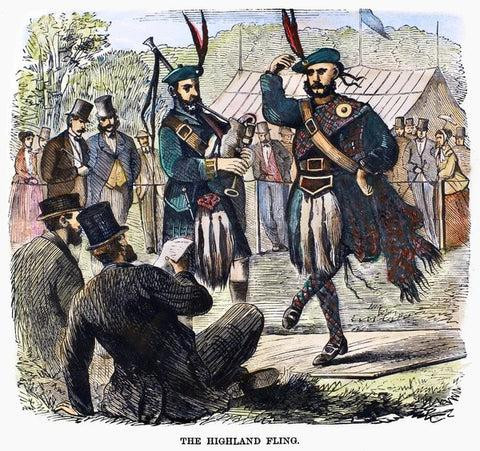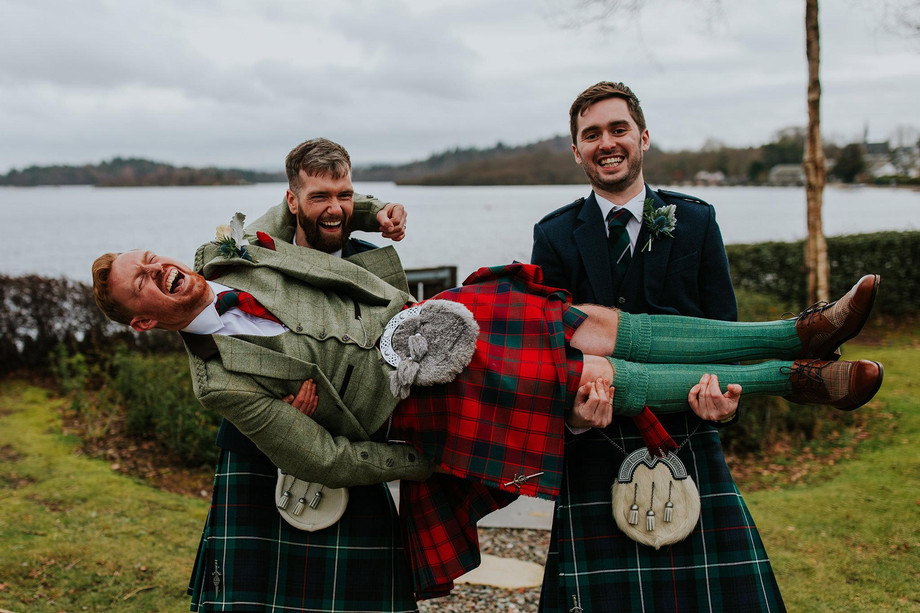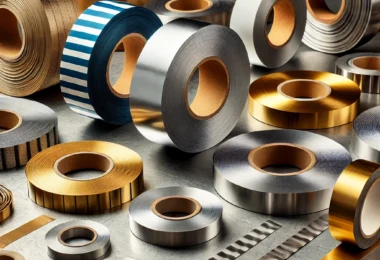Introduction
Have you ever wondered why Scottish men proudly don kilts, those iconic tartan skirts? The tradition of wearing kilts goes back centuries and holds significant cultural and historical value in Scotland. In this article, we will delve into the reasons behind this unique tradition, exploring its origins, symbolism, and enduring appeal. Join us on this fascinating journey into the world of Scottish kilts.
The Origins of Scottish Kilts
Ancient Roots of the Kilt
The roots of the kilt can be traced back to ancient times. The earliest predecessors of the modern kilt were garments known as the “féileadh” and the “brat,” worn by Gaelic-speaking people in the Scottish Highlands. These early garments consisted of lengths of fabric that were wrapped and belted around the body.
Why Do Scottish Men Wear Kilts?
Why do Scottish men wear kilts? as a proud symbol of their cultural heritage and national identity. The kilt is a traditional Scottish garment that originated in the Highlands and has been worn for centuries. It is made of tartan fabric, which consists of various patterns and colors representing different Scottish clans or regions. The kilt is often associated with Scottish traditions, such as bagpipe music and Highland dancing. It is worn on special occasions like weddings, formal events, and Highland games, where men proudly display their kilts as a mark of Scottish pride and tradition.
The Symbolism of Kilts
Clan Identification
One of the primary reasons Scottish men wear kilts is to showcase their clan affiliation. Each Scottish clan has its own unique tartan pattern, which is incorporated into the design of the kilt. By wearing their clan’s tartan, Scots proudly display their heritage and familial connections.
Scottish Pride and Heritage
Wearing a kilt is an expression of Scottish pride and a celebration of Scottish heritage. The kilt represents a connection to Scotland’s rich history, culture, and traditions. It serves as a visible symbol of national identity, fostering a sense of unity and belonging among the Scottish people.
Practicality and Functionality
Adaptability to Climate
Scotland’s unpredictable weather, characterized by rain, wind, and fluctuating temperatures, makes the kilt a practical choice of attire. Made from heavy wool, kilts provide insulation during cold weather while still allowing air circulation in warmer conditions. The fabric is also highly water-resistant, keeping the wearer dry and comfortable.
Freedom of Movement
The design of the kilt allows for freedom of movement, making it well-suited for various activities. Whether hiking in the rugged Highlands or participating in traditional Scottish dances, the kilt provides ease of motion and agility. This practical aspect contributes to its popularity among Scottish men.
Transition to the Modern Kilts
The transition from the ancient féileadh to the Modern kilts as we know it today occurred in the 16th century. The belted plaid, a precursor to the kilt, was a large piece of tartan fabric that was draped over the shoulder and belted at the waist. Over time, this evolved into the modern kilt, which is pleated and worn around the waist.
The Influence of Scottish History and Culture
Historical Events and Kilts
Throughout Scottish history, kilts have been worn during significant events, including battles and ceremonies. The kilt became a symbol of Scottish warrior culture, representing bravery, strength, and resilience. It is a reminder of the struggles and triumphs that have shaped Scotland’s history.
Scottish Traditional Dress
The kilt is an integral part of Scottish traditional dress, often worn on formal occasions such as weddings, Highland gatherings, and national celebrations. It adds an air of elegance and sophistication to these events, highlighting the timeless charm of Scottish culture.
The Global Appeal of Kilts
Kilts in Pop Culture
Scottish kilts have gained global recognition and are often associated with Scotland itself. In popular culture, kilts have been featured in movies, television shows, and music videos, portraying a sense of Scottish authenticity and charm. This exposure has contributed to the worldwide fascination with kilts.
Where to buy a kilt?
Looking to embrace your Scottish heritage or add a touch of traditional style to your wardrobe? Look no further! Where to buy a kilt? Discover the perfect kilt to elevate your fashion game at our exclusive kilt emporium. With a wide range of high-quality kilts available, we are the go-to destination for all your kilt needs. From classic tartans to contemporary designs, our collection offers something for everyone. Whether you’re attending a formal event or simply want to make a unique fashion statement, our kilts are meticulously crafted to ensure the perfect fit and exceptional comfort. Step into our world of kilts and experience the timeless elegance firsthand. Shop now and unleash your inner Highlander!
Kilts in Modern Fashion
Beyond their traditional roots, kilts have also found their way into modern fashion. Contemporary designers have reimagined the kilt, incorporating it into stylish and avant-garde designs. Kilts are no longer limited to men, as women have embraced this unique garment, creating a fusion of tradition and contemporary fashion.
Evolution and Innovation
Contemporary Kilt Designs
While the traditional kilt remains popular, contemporary designs have emerged, offering a fresh take on this iconic garment. From alternative fabrics to unique pleating styles, modern kilts cater to diverse tastes and preferences. This evolution ensures that the kilt continues to evolve while retaining its authenticity.
Conclusion
Scottish kilts hold a timeless allure, encapsulating the spirit of Scotland and its rich cultural heritage. From their ancient origins to their modern-day appeal, kilts have stood the test of time, symbolizing clan pride, functionality, and Scottish identity. Whether worn for ceremonial purposes, outdoor activities, or as a fashion statement, the kilt remains an enduring symbol of Scotland’s tradition and authenticity.
FAQs
- Q: Are all kilts made from tartan fabric?
-
-
- A: Yes, traditionally, kilts are made from tartan fabric, which represents the wearer’s clan affiliation.
-
- Q: Can women wear kilts too?
-
-
- A: Absolutely! Kilts are no longer limited to men and have become popular among women as well, offering a stylish and unique garment.
-
- Q: How do you choose the right tartan pattern?
-
-
- A: The choice of tartan pattern depends on your clan affiliation. If you have Scottish ancestry, you can research your clan’s tartan online or consult with experts to find the appropriate pattern.
-
- Q: Are kilts only worn for special occasions?
-
-
- A: While kilts are often worn for formal events and celebrations, they can also be worn casually or for outdoor activities due to their practicality and comfort.
-
- Q: Can kilts be tailored to fit individual preferences?
-
- A: Yes, kilts can be tailored to ensure a perfect fit. Professional kilt makers can customize the length, pleating style, and other aspects according to personal preferences.


















